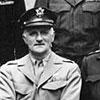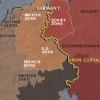The devastation of the European economy was more concrete. Ravaged by five and a half years of fighting, the industrial base of much of Europe had been totally destroyed: factories, cities, and housing in vast swaths of Europe had been reduced to rubble. Spared from direct fighting on its own soil, the United States emerged from the Second World War as the only belligerent whose industrial infrastructure had not been entirely destroyed by the fighting. During the war years, the American economy had managed to transform itself extremely quickly, re-tooling factories from the production of automobiles to the production of B-17 bombers and Sherman tanks, and shifting its production almost completely from consumer goods to military equipment.
 In addition, America successfully and rapidly reorganized much of its workforce, moving people from parts of the country (particularly the South) to areas where their labor was more urgently needed and successfully mobilizing women into the workforce—an effort aided by posters like this one of “Rosie the Riveter,” issued by the United States government. “Rosie,” a composite figure not based on any one woman, became a symbol of the working woman during the War—strong, competent, and yet still feminine.
In addition, America successfully and rapidly reorganized much of its workforce, moving people from parts of the country (particularly the South) to areas where their labor was more urgently needed and successfully mobilizing women into the workforce—an effort aided by posters like this one of “Rosie the Riveter,” issued by the United States government. “Rosie,” a composite figure not based on any one woman, became a symbol of the working woman during the War—strong, competent, and yet still feminine.
Source:
Miller, J. Howard. “We Can Do It!,” 1943. Produced by Westinghouse for the War Production
Co-Ordinating Committee. NARA Still Picture Branch, NWDNS-179-WP-1563 (accessed October 22, 2012).












